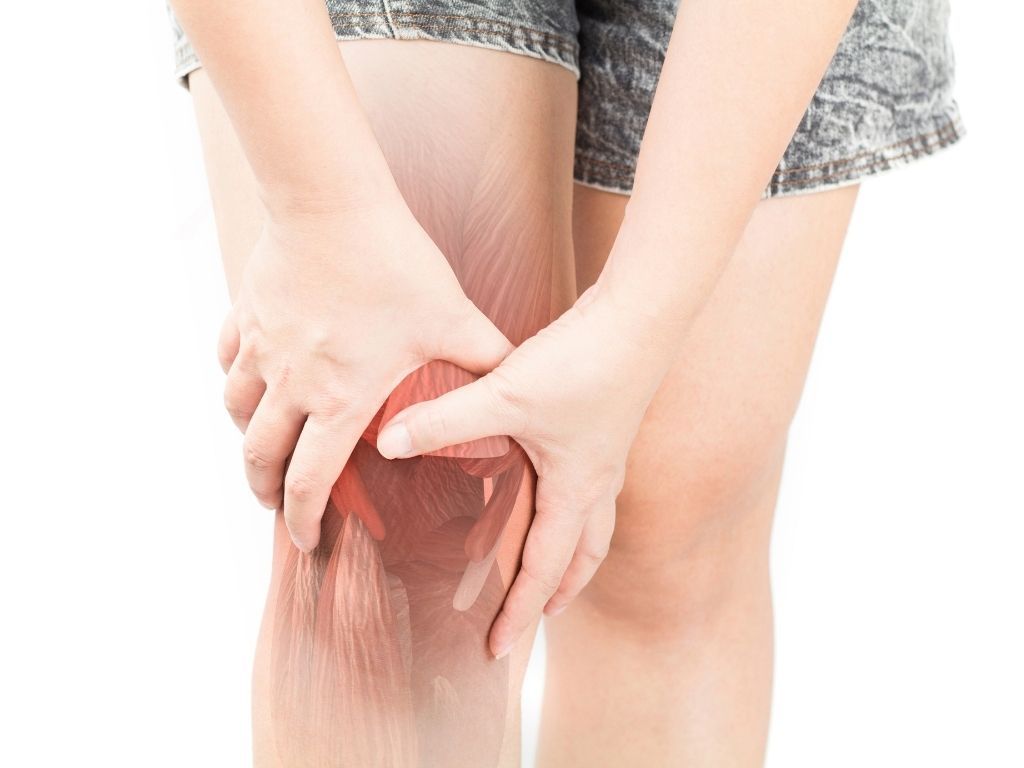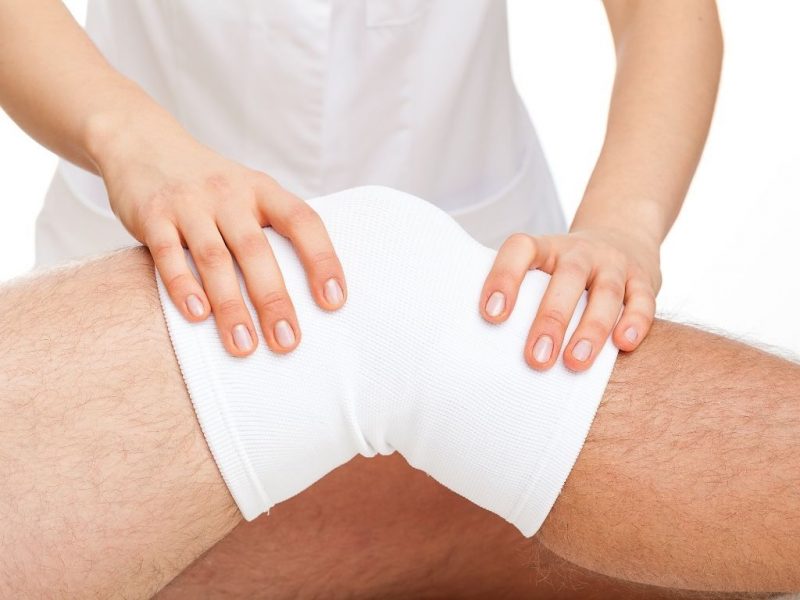Doing sports is healthy. That is a fact. However, with either a hobby or a competitive sport, the chances of injury are unfortunately always there. The prevalence of knee injuries during sport activities is quite high, so every effort should be made to minimize the risk of injuries to the knees.
You can read in this article about the following topics:
- Why is the knee so vulnerable to injuries?
- Types of knee injuries
- Arthrosis
- Osteochondritis dissecans
- Knee strains
- Knee ligament sprains and tears
- Preventing knee injuries
Why is the knee so vulnerable to injuries?
The two longest bones of the body, the femur and the tibia, meet in the knees, which puts a great strain on the knee joints. The knee joint is a hinge type synovial joint. It is subjected to constant pressure, so there is a risk of twisting and other injuries. Sometimes a force of seven to nine times one’s body weight is exerted across the knee, which can damage the ligaments or cartilage of the joints.
Knee injuries can be caused by blunt force trauma or prolonged excess pressure on the joints.
Trauma means a sudden, acute injury that can be a broken bone or a ligament injury. There are sports that put great strain on your knees. These are usually activities that involve frequent, sudden changes in direction, such as handball, basketball, fencing, or skiing.
There is excess pressure on your knees if you run on surfaces for a long time, e.g., on concrete (runner’s knee), or lift heavy weights. These activities don’t cause immediate injuries, but they cause microtraumas to the knees, which lead do degenerative changes (e.g., osteochondritis dissecans). As a result of these recurring microtraumas, part of the surface of the knee joint may even die.
Types of knee injuries
Arthrosis
Arthrosis develops over a long period of time due to excess pressure on the joints. The direct cause of arthrosis is that the water content of the cartilage decreases, which makes the connective tissue fibers vulnerable and the cartilage thins. Due to the thinning cartilage, the bone surfaces rub together during movement, resulting in inflammations.
The chances of arthrosis increase with age, but the main risk factor is excess weight.
Symptoms of arthrosis:
Pain first occurs when the joints are under pressure, later it becomes constant. The range of motion decreases in the joint, it becomes deformed. In more severe cases, even bone protrusions can appear on the bone, and the joints crack and creak as you move.
Treating arthrosis:
You can use anti-inflammatory and cartilage-protecting supplements and drugs that treat inflammatory processes. Supplementary treatments include physiotherapy, electrotherapy, spa treatments, physical therapy, and swimming. In more severe cases, surgery or even prosthetics may be needed.
Osteochondritis dissecans
It is an injury to the meniscus. Osteochondritis dissecans usually occurs when the knee is twisted following knee movements, so it is quite common in sports involving sudden changes in direction but can even be caused by uneven surfaces or getting off a vehicle.
Symptoms of osteochondritis dissecans:
Osteochondritis dissecans is accompanied by sudden, severe pain. Often, the knee can’t extend, but it can bend. This is called jamming when a fragment gets jammed between the moving parts of the joint.
Treatment of osteochondritis dissecans:
Treating a meniscus injury is a complex process. It can heal when the injured person is younger and if the injury occurred in a part of the cartilage that has proper blood flow. However, this is quite rare. Generally, a knee arthroscopy may be required to remove the damaged pieces of the cartilage.
Injuries to the knee ligaments include strains, sprains, partial or complete tearing of a ligament.
Knee strains
Knee strains affect the muscles around the knees, not the joints. Strains are usually caused by a sudden movement, but even chronic strains can develop. This is especially dangerous because the structure of the muscles and tendons can change as a result, and even the tissue can degenerate.
Symptoms of knee strains:
The symptoms of knee strains include pain and muscle cramps. The injured area usually swells, and it becomes difficult to move the knee. In more severe cases, a partial or complete muscle tear occurs, which bruises. If there is a torn muscle, the injured area may sink, and the injury is clearly visible.
Treating knee strains:
Mild to moderate strains usually don’t require surgery. It is important to rest and cool the injured limb. However, don’t use cold packs for more than 20 minutes at a time. To reduce swelling, wrap the knee and elevate it. Painkillers don’t only relieve pain, but also reduce inflammation, so you can start taking them right away. In addition to meds, you can use pain-relieving patches on the site of the injury. Thus, they don’t hurt the stomach or digestive system.
Once the pain is gone and the swelling has reduced, you should strengthen the injured knee with physiotherapy.
Knee ligament sprains and tears

Sprains are usually caused by a sudden twisting of the joint. When a sprain occurs, the two ends of the bone move away from each other, and the joint ligaments stretch.
In more serious cases, the sprain may also result in torn ligaments. The tear can be partial or complete.
Trauma can affect the anterior or posterior cruciate ligaments, medial collateral ligaments, or even all three at once. Injuries to the medial collateral ligament and anterior cruciate ligament are the most common, caused by a sudden extensive force to the joints.
Symptoms of knee ligament sprains and tears:
Sudden, sharp pain followed by swelling in the knee. This is often accompanied by difficulty in walking and instability. If the cruciate ligaments are injured, you may hear a popping sound.
Treatment of knee ligament sprains and tears:
Ligament injuries can be treated with physiotherapy or surgery. If the medial collateral ligaments are damaged, physiotherapy may be effective, however, injury to the cruciate ligaments often lead to surgery.
Preventing knee injuries
Most knee injuries can be prevented by strengthening the muscles around the knee, working out regularly, and paying attention to your weight. Regular exercise not only strengthens the muscles, but also increases the stability of the knee joints.
You can do exercises that are easier on the knees (e.g., swimming, Nordic walking), but you also have to know that the best way to prevent knee injuries that can occur during a workout is to warm-up properly. In addition to warm-up exercises, you can also use warm-up creams on your knee joints to minimize the risk of injury.
You can read more about how to put together a warm-up session professionally here.

